digital delights, dark deeds and a date with google
Hot air balloon disasters, scandalous court records and a boom in digital collections all feature as we look back at some of Cambridge University Libraries' most popular stories of 2020
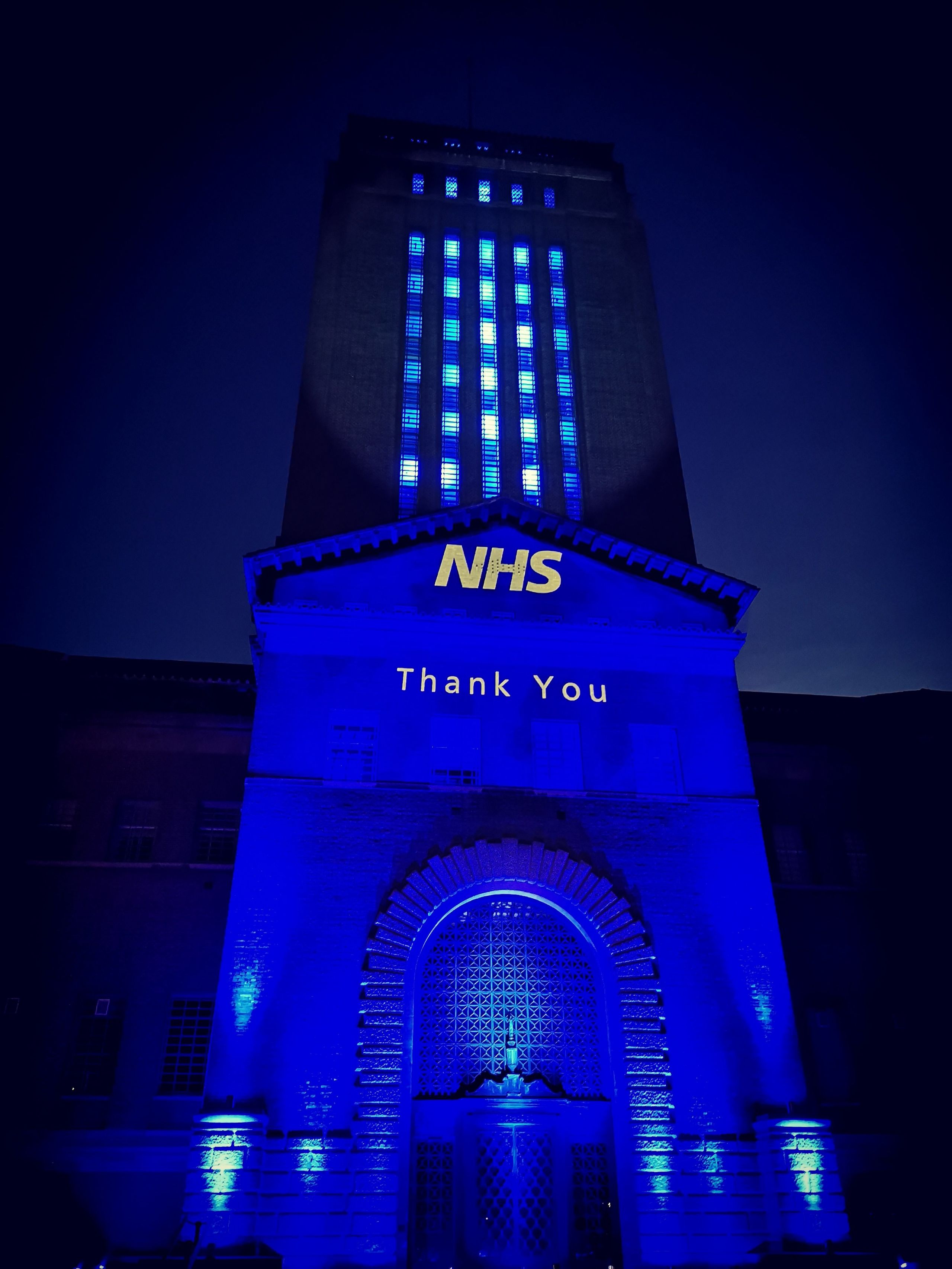
2020 has been a year like no other.
COVID-19 has dominated our daily lives and global news cycles for the majority of the past 12 months. Despite this, library life has continued in these extraordinary times as new archives continue to be digitised and we keep striving to make our collections and services available online and in person to the widest possible audience.
In 2020 alone, we have had almost 400,000 reads of our Shorthand stories, making University Library stories some of the most popular Shorthand content published by Cambridge University this year.
Let's look back on a year of library love!
Revealing the truths behind a Hollywood film…
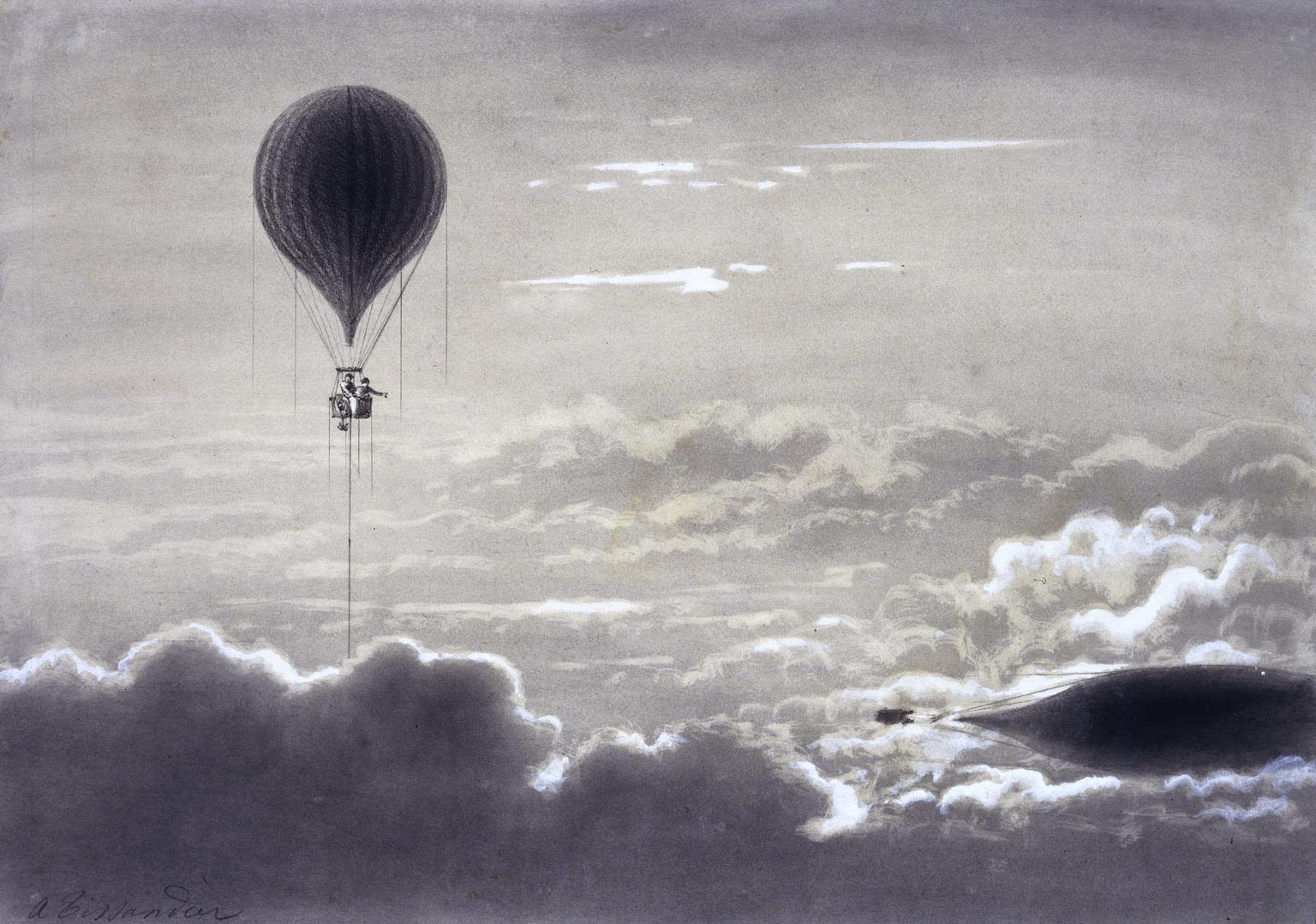
'Mr Glaisher's Voyage', 5 September 1862. Crayon drawing showing the scientific balloon ascent. Science Museum Group
'Mr Glaisher's Voyage', 5 September 1862. Crayon drawing showing the scientific balloon ascent. Science Museum Group
Do you ever watch a film and wonder how much is added for dramatic effect?
Hollywood film The Aeronauts - which was released in October 2019 - is based on a number of pioneering balloon flights that took place in the 1800s, most notably, the record-breaking flight from Wolverhampton on September 5, 1862 by renowned meteorologist and astronomer James Glaisher, and his pilot Henry Coxwell.
In January, we delved into a fascinating collection of ballooning artefacts and writings; from newspaper articles to event posters collected by Glaisher, including a copy of the report describing the September 5 flight, as well as posters advertising balloon flights and a number of scrapbooks containing press cuttings relating to all matters of ballooning from popular ballooning adventures and expeditions to ballooning accidents.
“Outstanding National Importance"
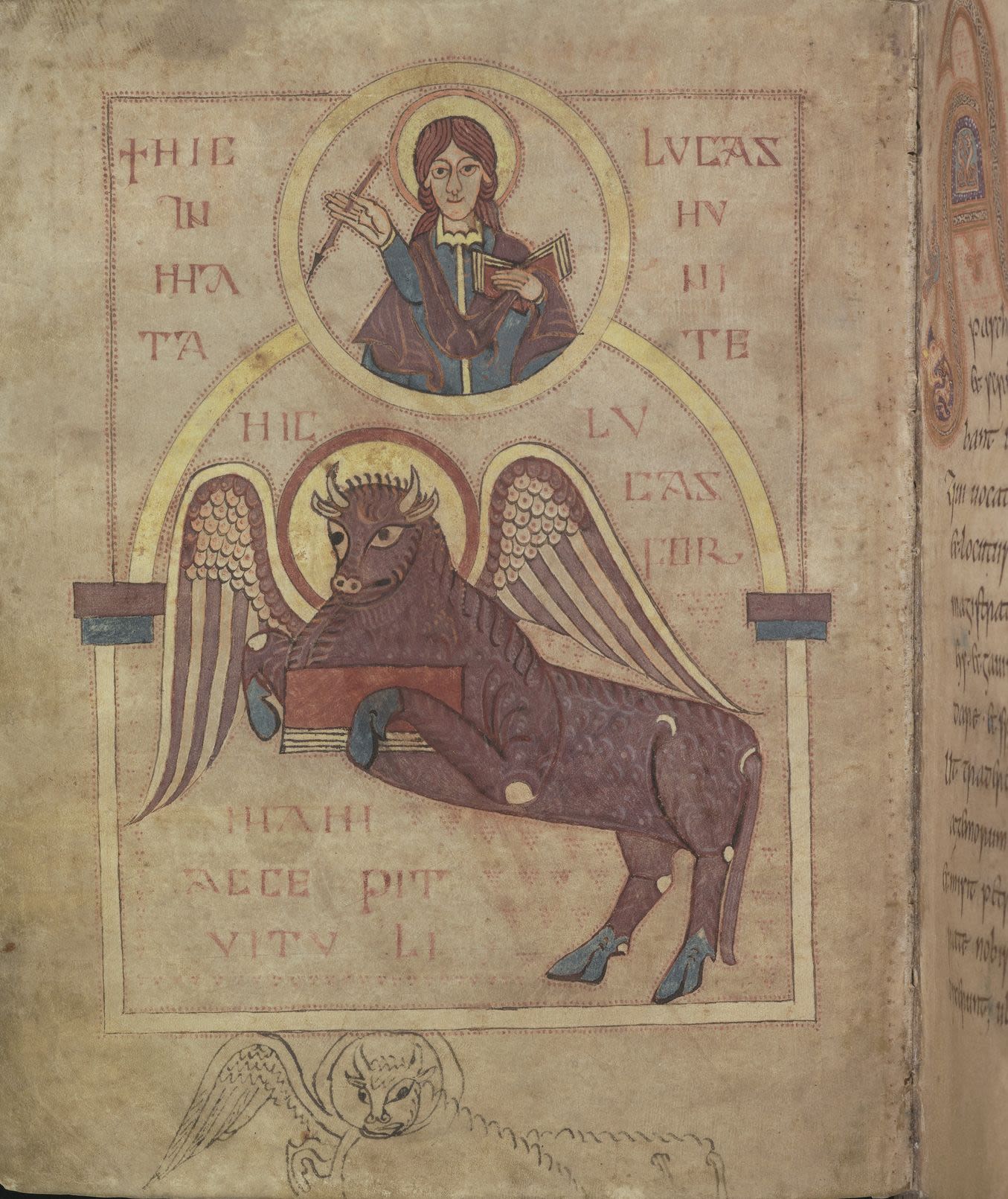
The Book of Cerne is an early ninth-century Insular or Anglo-Saxon personal prayer book with Old English components. It is now commonly believed to have been produced sometime between ca. 820 and 840 CE.
The Book of Cerne is an early ninth-century Insular or Anglo-Saxon personal prayer book with Old English components. It is now commonly believed to have been produced sometime between ca. 820 and 840 CE.
The collections held at Cambridge University Library span more than 4,000 years of human history, in more than 2,000 languages and contain books, maps, manuscripts and everything else in between.
Earlier this year our Special Collections were recognised by Arts Council England as one of 152 collections in libraries, museums and archives across England to have outstanding national and international importance under the Designation Scheme.
What do you do when your library is full?
Did you know that Cambridge University Library has around ten million books, maps, manuscripts and other objects, one million of which are kept off-site at our state-of-the-art storage facility in Ely?
The Library Storage Facility opened in May 2018 and reached the landmark figure of one million objects transferred to Ely 18 months after opening. It has become a critical resource in the day-to-day running of Cambridge University Libraries.
Built to store up to five million items, the self-regulating facility has a capacity equal to 18 Olympic-sized swimming pools with shelving that measures 65 miles – the distance from Cambridge to London. The facility is now 20-25 per cent full.
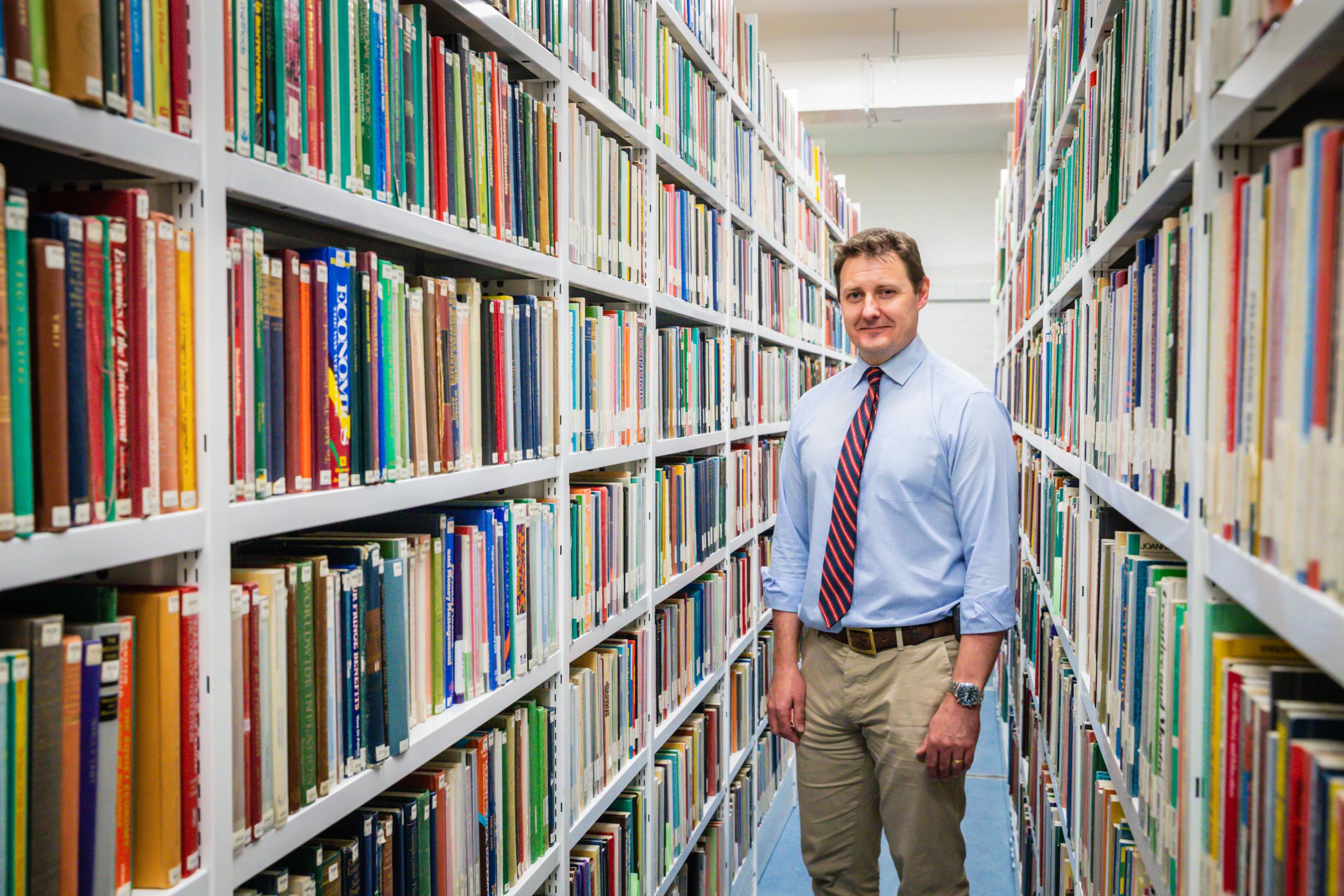
Robin James, Head of Collections Logistics and Services. Photo by Nick Saffell.
Robin James, Head of Collections Logistics and Services. Photo by Nick Saffell.
Collecting a city's history of the coronavirus outbreak
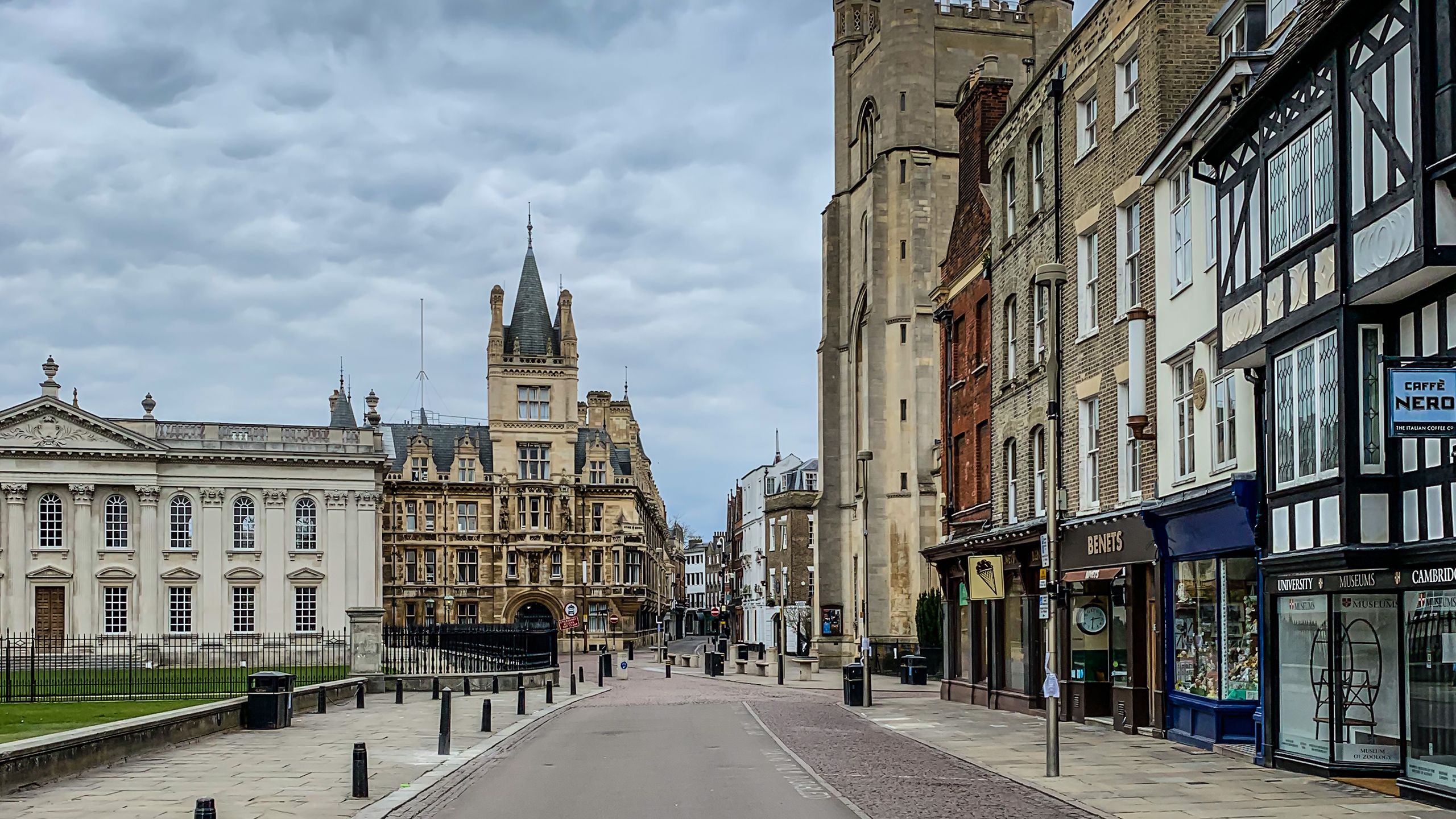
A deserted King's Parade, Cambridge, during the COVID-19 pandemic in March 2020 by Lloyd Mann.
A deserted King's Parade, Cambridge, during the COVID-19 pandemic in March 2020 by Lloyd Mann.
2020 has been a strange year to say the least. In April, we launched a project to help us create a collaborative history of the Coronavirus outbreak with the people of Cambridge.
Aiming to capture the experience of the Collegiate University and the city of Cambridge during the pandemic, the collection aims to collect all kinds of digital and physical materials relating to the pandemic. These include, but are not limited to, videos, photographs and images (including posters and leaflets), audio recordings, creative projects, as well as journals and diaries.
An empty Cambridge University Library during the COVID-19 lockdown, April 2020. Film by Blazej Mikula.
An empty Cambridge University Library during the COVID-19 lockdown, April 2020. Film by Blazej Mikula.
Ancient (digital) Greece
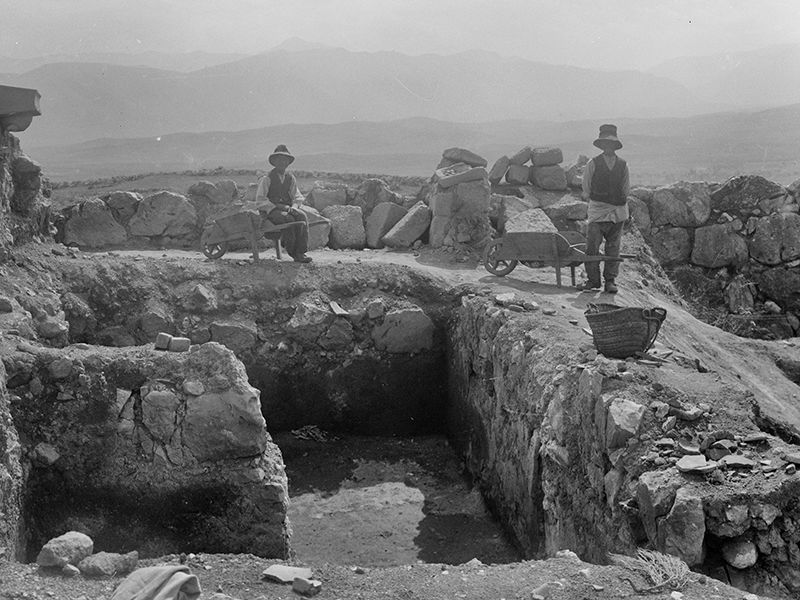
Workmen during the excavations, Mycenae, 1920-1923, © British School at Athens
Workmen during the excavations, Mycenae, 1920-1923, © British School at Athens
Despite the challenges of working from home that the pandemic has presented, the team responsible for our Cambridge Digital Library have been working hard to continuing adding to its world-class collections.
The first collection to be launched remotely during lockdown was a collection of archive material relating to the British excavations of one of the most celebrated and famous cities of the ancient world, Mycenae in Greece.
To mark the centenary of the British archaeological dig led by Alan JB Wace, Professor of Classical Archaeology in the Faculty of Classics and Director of the British School at Athens (BSA), the Faculty of Classics collaborated with the BSA and the Cambridge Digital Library to digitise a collection of fascinating photographs, architectural and illustrative drawings, correspondence and original archaeological notebooks, preserving important material from these pioneering excavations.
The exiled German-Jew who helped save Turkey’s children
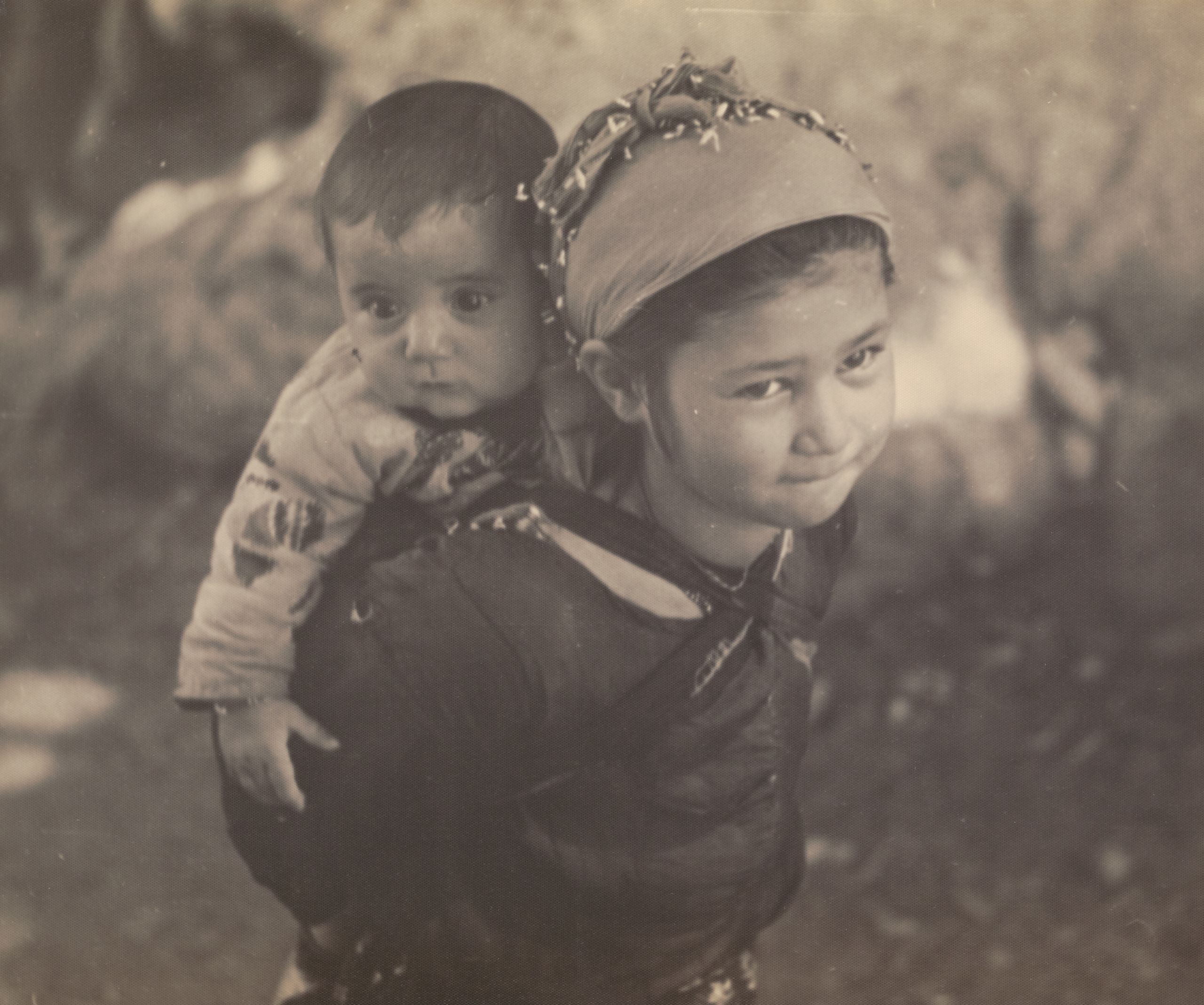
A remarkable collection of photographs belonging to German-Jewish paediatrician Albert Eckstein were digitised on the Cambridge Digital Library earlier this year, and chronicle his pioneering work in some of the most impoverished regions of 1930s Turkey.
After being exiled by Hitler in 1935, Eckstein left Germany and took up the post of university chair in Ankara, Turkey. In his new post, Eckstein developed an analysis of infant and child healthcare, not just in the major city of Istanbul and emerging capital of Ankara, but across great swathes of Turkey's impoverished countryside, too.
The Eckstein Albums offer a unique insight into Turkish medical history and the engagement of Jewish migrants in Atatürk’s health and social reforms. These include the campaign for healthy children, a drive for basic health and hygiene education, and major campaigns against specific widespread and debilitating diseases such as trachoma or malaria.
Uncovering digital archives
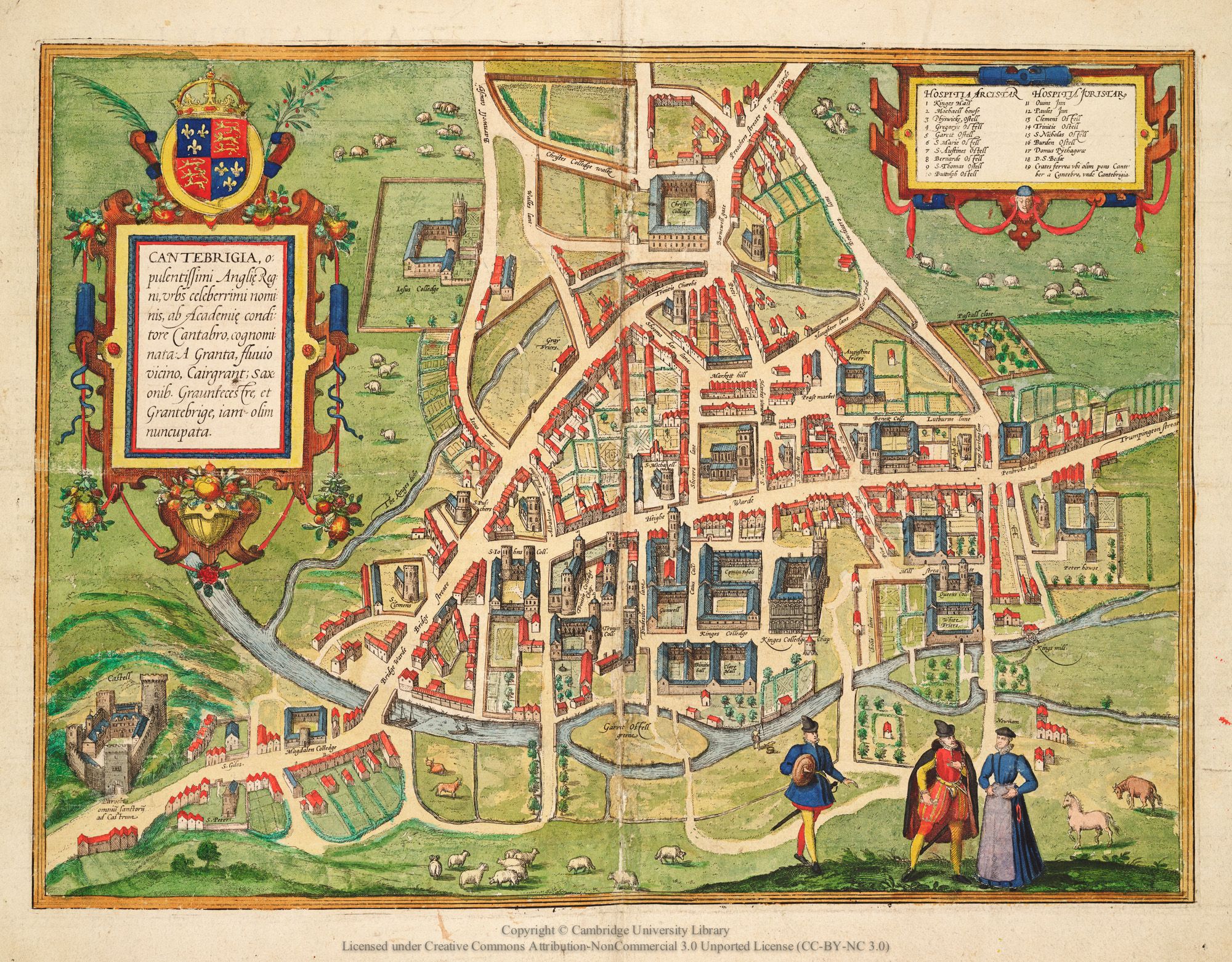
Cantebrigia (Cambridge) in 1575 by George Braun. © Image copyright Cambridge University Library
Cantebrigia (Cambridge) in 1575 by George Braun. © Image copyright Cambridge University Library
With a new digital revolution under way thanks to the coronavirus pandemic, now more than ever, digital collections have demonstrated their importance to 21st century teaching, learning and research.
With more than half a million images of almost 40,000 items, the Cambridge Digital Library is a unique source of material for researchers and the public alike – there really is something for everyone.
In this Shorthand, we picked out five collections worthy of shouting about – from stunning historical maps to remarkable photographs, personal journals, and exquisite paintings and drawings.
The curious case of a missing boy from Sutton…

From the mysterious case of a missing boy to the theft of swans - one of the more interesting and eye-opening collections we have featured this year is the archive of the Isle of Ely Assizes court.
A joint project with Cambridgeshire and Huntingdonshire Family History Society, the Isle of Ely Assizes records offer a rare insight in to crime and punishment in Cambridgeshire, with Ely being one of the only diocese in England and Wales – apart from Durham – to hold fiscal and judicial privileges over such a large area.
Despite working from home, archivists have still been busy transcribing and cataloguing from pictures taken before the introduction of lockdown in March. Back in September, it was announced that the team had finished cataloguing all 138 rolls, 1,352 membranes - and 5,621 entries.
Cambridge University Library joins forces with Google
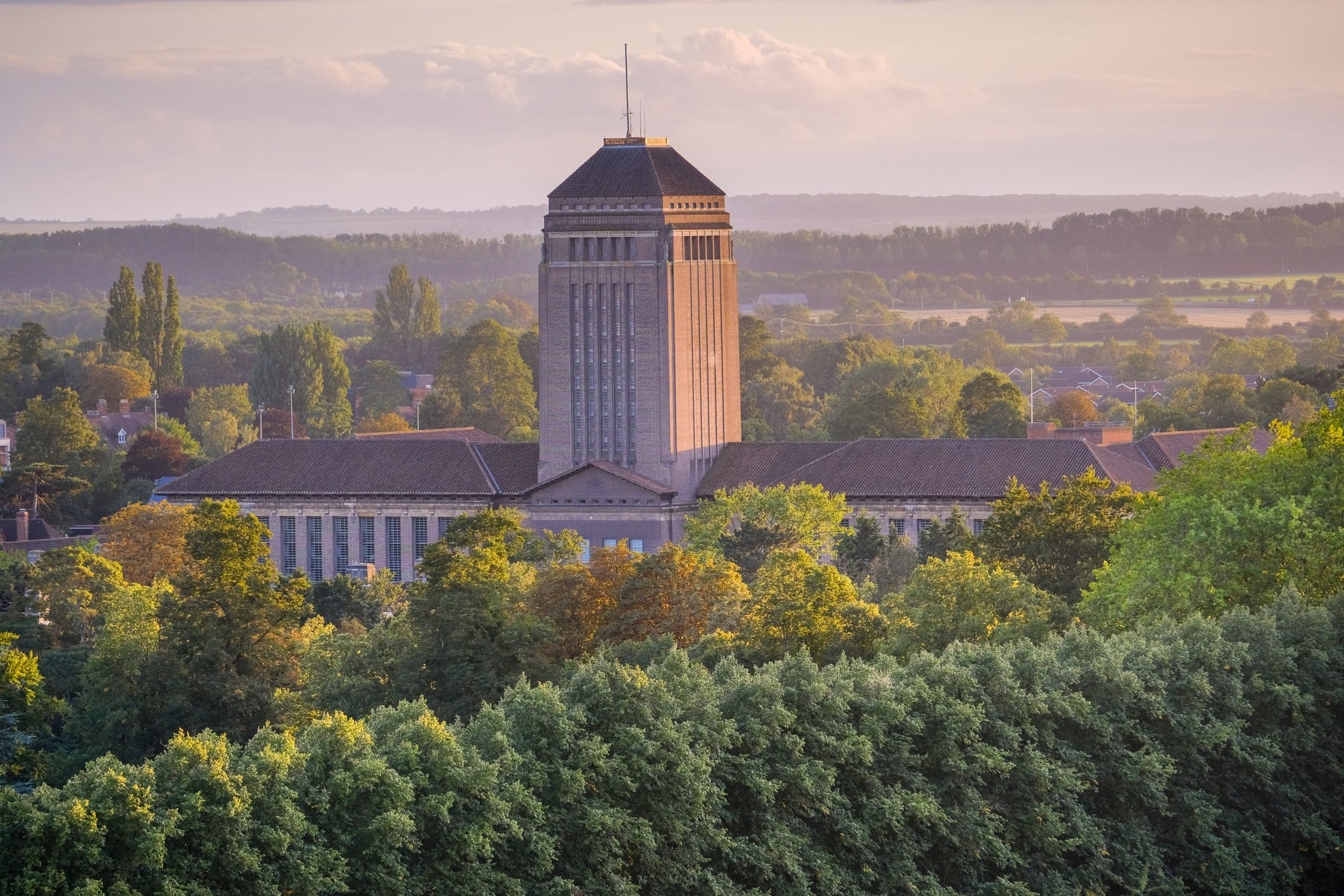
Cambridge University Library by Sir Cam
Cambridge University Library by Sir Cam
Something very exciting happened over the August Bank Holiday – we became the first Cambridge University institution to join the Google Arts and Culture platform!
Joining organisations such as the British Museum, Rijksmuseum, and the White House among many others, we’ve made some of our treasures and curious objects freely available for exploration by Google’s global audience.
The online platform allows users to zoom in on objects in great detail, revealing the fascinating narratives behind unique objects such as the earliest Chinese book printed using the technique of douban, a printing method using different colours of ink applied to woodcut blocks, or Sir Isaac Newton’s undergraduate notebooks from his time at Trinity College, Cambridge.
Users can follow the developments in communication from the oldest written object in the library’s collection, a Sumerian clay tablet dating from 2200BCE, to the first Western European book to be printed using movable type, the Gutenberg Bible, to mass-produced paperback books, such as the Penguin paperbacks of the late 1930s.
Cambridge University Librarian Dr Jessica Gardner said: “One of our driving principles is to freely and openly share our world-class collections with the world. With fewer people able to travel at the moment, our partnership with Google is a perfect example of bringing the Library to millions of enquiring minds across the globe, joining some of the world’s biggest and best-loved cultural institutions already on the platform."
A very Cambridge pandemic
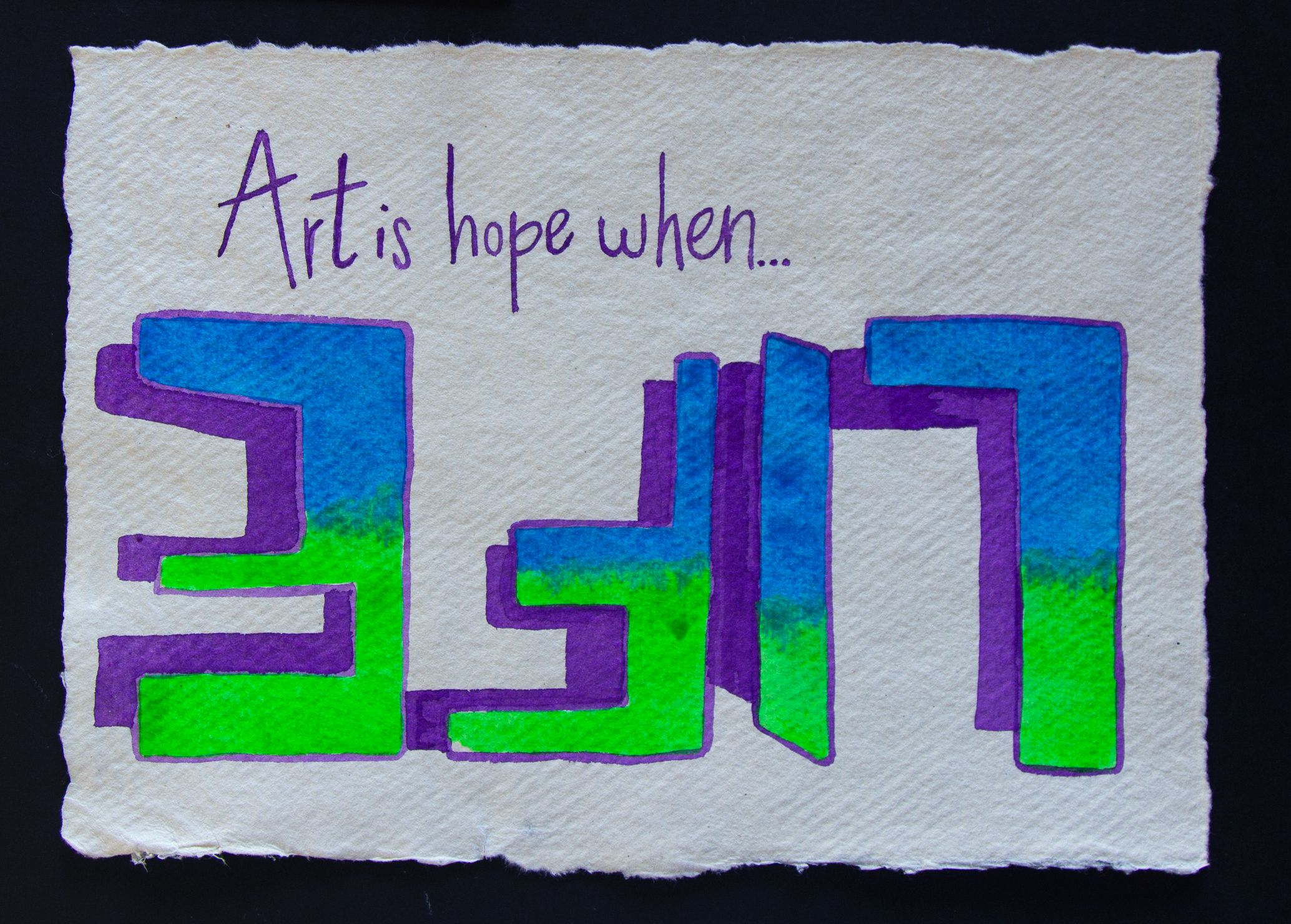
Art is hope, Suzanne Morris
Art is hope, Suzanne Morris
Following the launch of the Collecting COVID-19 initiative in April, the people of Cambridge started to send in their contributions to this unique and important archive.
To date, almost 240 digital items have been transferred into the collection from nearly two dozen contributors, including photographs and audio material as well as video, song lyrics, art work and other creative projects.
The aim is for the material to be made available to researchers and academics in years to come. While the UL, and faculty and departmental libraries, carry on their processes of opening fully after lockdown, the commitment to digital collections has never been so vital.
The COVID-19 Collection is a community archive, built by the people of Cambridge be they resident, university staff, student or graduate, offering an eyewitness account of a global pandemic at a local scale.
running a library through coronavirus
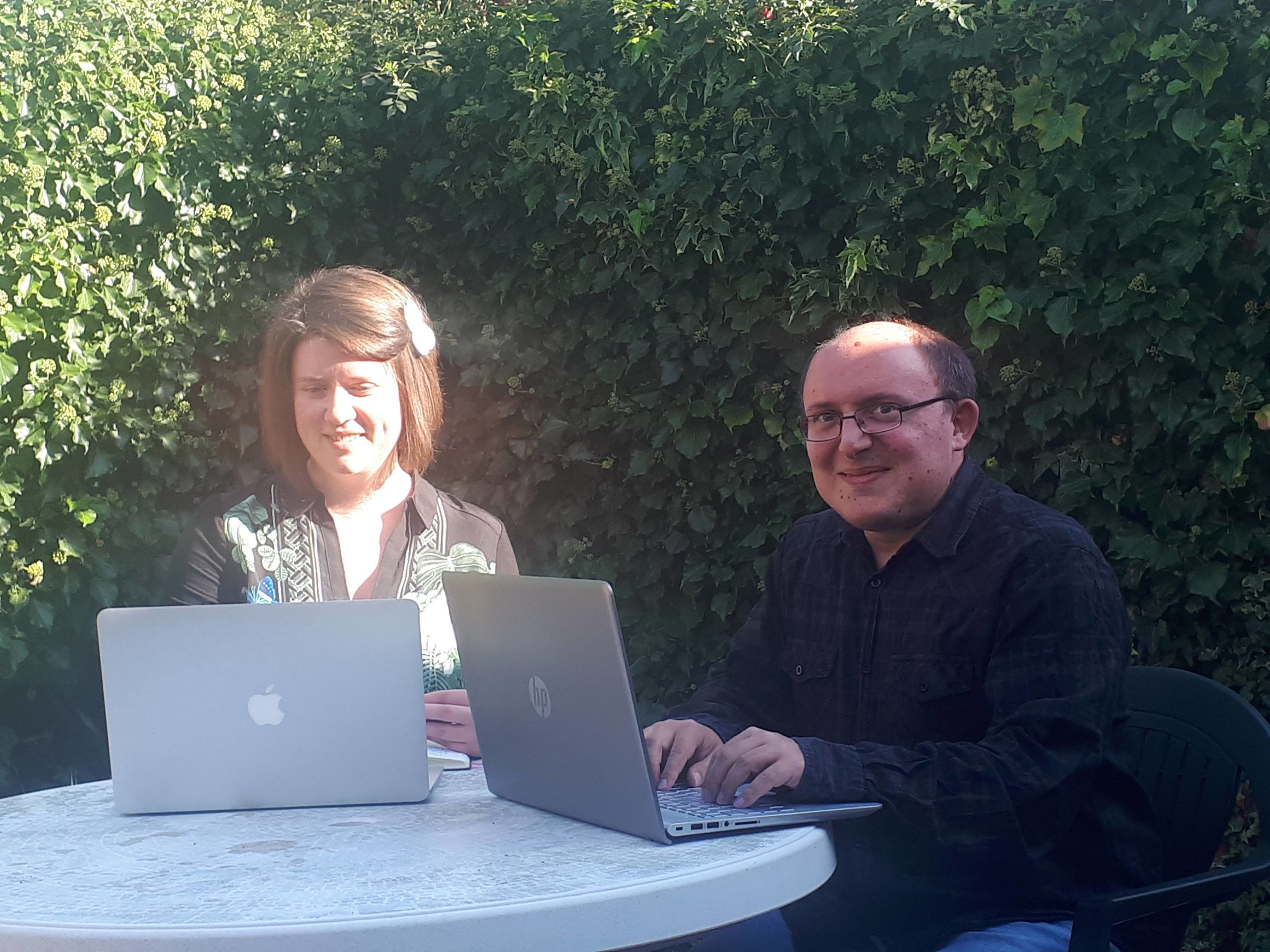
Veronica and Matthias working in the garden
Veronica and Matthias working in the garden
COVID-19 has halted our ‘normal’ way of life and libraries all over the world have had to adapt how they serve their customers, whether they be students, staff or members of the public.
We spoke to husband and wife Veronica Phillips, Assistant Librarian at the University of Cambridge Medical Library, and Matthias Ammon, Research Support Librarian at Faculty of Modern and Medieval Languages and Linguistics Library to find out how they have coped working from home while still supporting their respective libraries.
"The support for staff from University and the University Libraries during this period has been impressive. I hope that this has shown that more flexible ways of working will become possible even if and when we return to ‘normality,'" said Matthias.
Ensuring Current and Future Access to Digital Collections

2020 really was the year of digital libraries and this was further cemented with the launch of the Digital Preservation Programme here at Cambridge University Library.
The project, which will be led by the UL with support from Cambridge University, will provide capabilities to care for digital collection materials and will be underpinned by open-source systems, tool, and standards.
The programme will also establish capabilities needed to support the Libraries' growing digital archives, particularly in areas of deposit by donors as well as appraisal, accessioning, and data recovery.
Can you help us find Darwin’s missing notebooks?
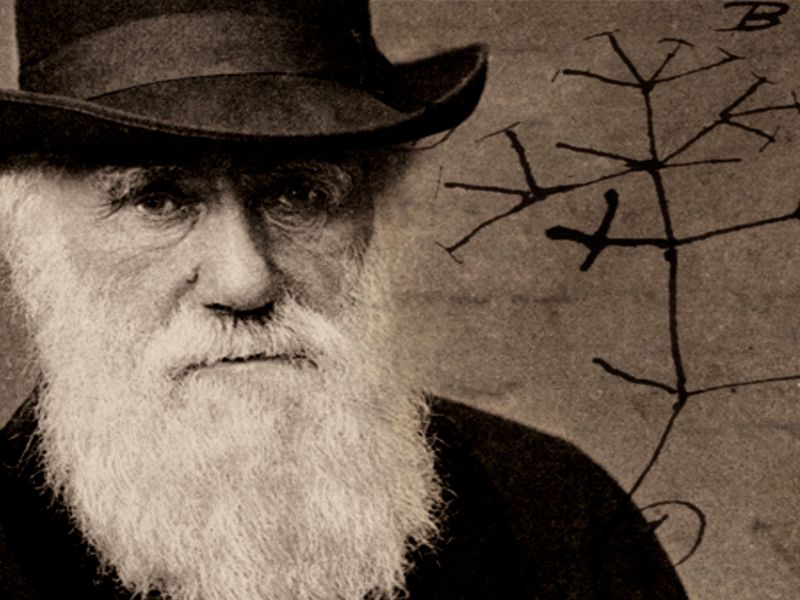
In November, we launched a public appeal to help us locate two missing notebooks belonging to Charles Darwin, one of which contains his iconic Tree of Life sketch.
Since the notebooks were first reported as missing in January 2001, a number of large-scale searches have been organised without success, leading us to reluctantly conclude that the notebooks have likely been stolen.
Dr Jessica Gardner, University Librarian and Director of Library Services since 2017, said: “I am heartbroken that the location of these Darwin notebooks, including Darwin’s iconic ‘Tree of Life’ drawing, is currently unknown, but we’re determined to do everything possible to discover what happened and will leave no stone unturned during this process.
“Someone, somewhere, may have knowledge or insight that can help us return these notebooks to their proper place at the heart of the UK’s cultural and scientific heritage.”

